Small towns in England
Top-Rated Small Towns in England
Choosing the best small English towns is no easy feat. This luscious land bursts with villages that will capture tourists' hearts and overload their camera's SD cards. No wonder it's one of the world's most visited countries.
From historic fishing hamlets to towns teeming with Cotswold charm, England does quaint like no other. These favorite small towns span the countryside from one coast to the next. Each one will whet your traveler's appetite and leave you wanting to stay for just a little bit longer.
Plan your travels with our list of the best small towns in England.
1. Castle Combe, Wiltshire
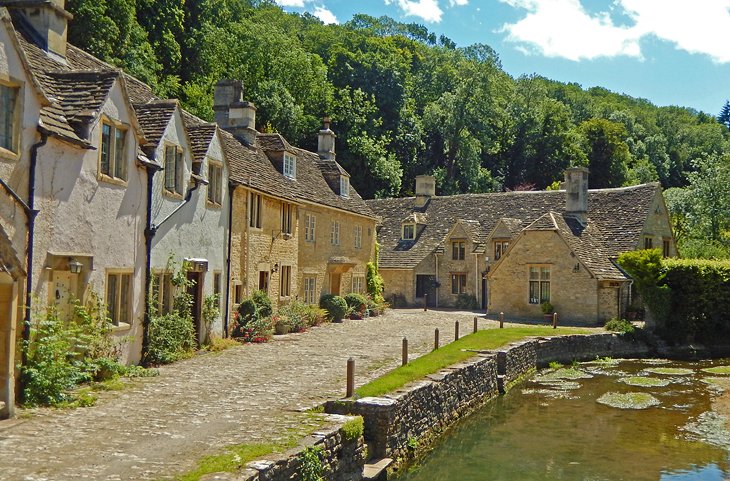
Stepping foot in Castle Combe is like being transported back in time—or into the pages of a book.
No one can argue its reputation as "the prettiest town in England." An old water pump, nestled behind fresh blooms, sits beside the market cross in the town's center. Nearby is St. Andrew's Church, home to the faceless, working medieval Castle Combe Clock.
Castle Combe's main attraction is comprised of perfectly preserved houses built with honey-colored Cotswold stone. As you walk through the tiny town, make sure to buy fresh fruits, veggies, herbs, or baked goods from the make-shift markets outside people's homes. And don't miss a meal in one of the town's restaurants. The White Hart has been around since the 14th century and offers service (and traditional English fare) with a smile. On a nice day, you can enjoy your meal on a picnic table outside.
The only downside to Castle Combe? You won't be alone. Used often as a backdrop for movies and television shows (you may recognize its charming town center from Steven Spielberg's War Horse), this hidden gem has become a hot spot for tourists. Aim to get here early or visit off-season if you're hoping for a quieter experience.
Tip: Walk across the low bridge that crosses the Bybrook to the 14th-century The Manor House Hotel and Golf Club. Once home to feudal lords, this impressive, stately manor is now a five-star hotel.
2. Painswick, Gloucestershire
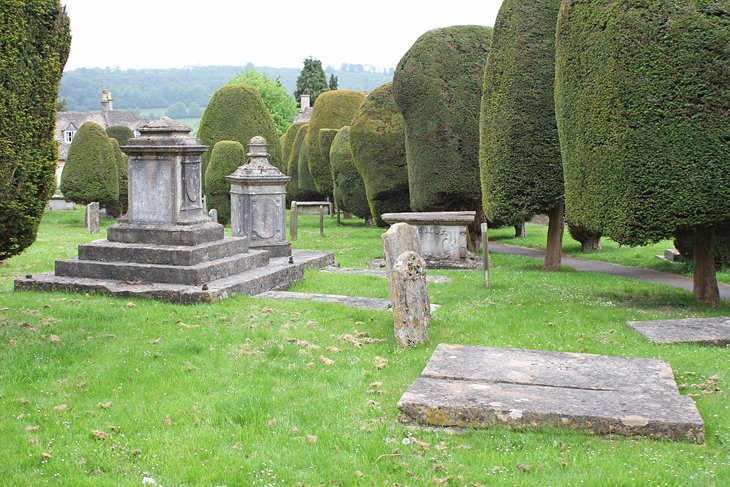
Ever wanted to live in a fairy tale? Visit Painswick. Walking through the St. Mary's churchyard will amaze even the biggest cynic. Armed with 99 spectacular yew trees (legend says the 100th won't grow), the grounds will make you forget the outside world.
Run through the tree tunnel, marvel at the tabletop tombs, and search the church tower for signs of the Civil War. If you happen to be here in time for a service, stick around; the locals are friendly and welcoming, with interesting tales to share.
Next, lose yourself in the winding streets lined with quintessentially English homes. Like Castle Combe, the houses here are made of Cotswold stone. If you look closely enough, you'll be able to find remnants of Painswick's past as a wool town, including donkey doors on Bisley Street.
Don't miss Rococo Gardens, which offers spectacular views of the countryside in addition to its lovely gardens.
Bonus: If you're up for a long walk, Painswick is on the Costwold Way footpath. Running from Chipping Camden to Bath, this famous path runs 100 miles in length.
3. Rye, East Sussex
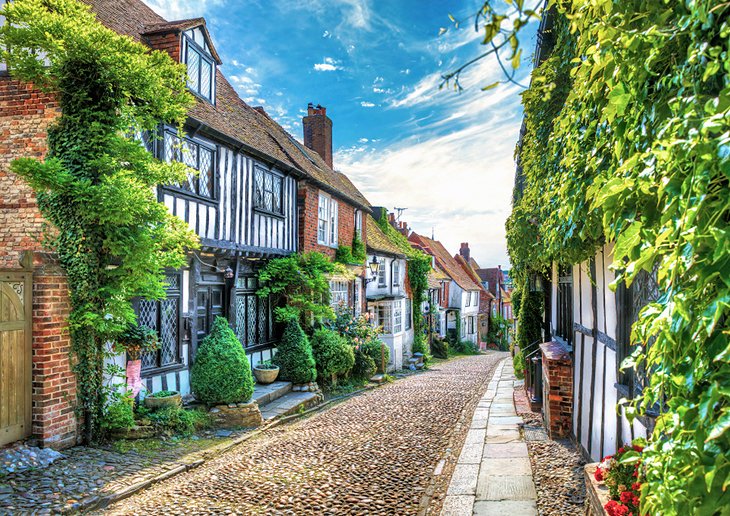
It's hard to get sick of walking through cobblestone streets, especially when they're lined with charmingly crooked houses. An hour and a half west of Brighton, Rye is both peaceful and picturesque. This fortified hilltop town offers incredible countryside and river views to all who visit.
Start your tour on Mermaid Street, making sure to take in the 15th-century timber-framed houses. Make a game out of finding the one with the most unique name—like "The House with Two Front Doors."
Wander down one of many secret passages before finding your way to Simon the Pieman for the most delicious scone (with cream and jam, of course).
Next, you'll want to take in the shops. Peppered with a few chain stores, Rye is better known for its vintage and eclectic shops selling everything from books to antiques.
Tip: The best spot to enjoy the view is St. Mary's church tower. From here, you can truly appreciate the terra-cotta roofs of the houses below.
4. Windsor, Berkshire
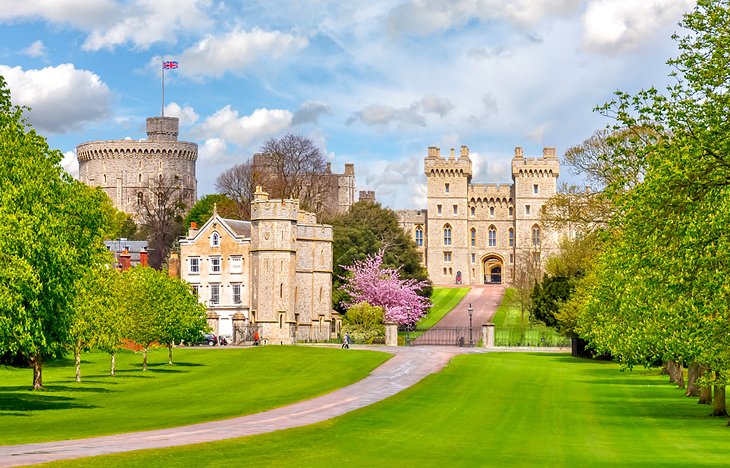
Currently made famous as the royal wedding venue for Prince Harry and Meghan Markle (and the backdrop for their first photo with baby Archie), Windsor has been a popular tourist destination for centuries. The main reason people flock here? Windsor Castle. This royal residence sits atop a hill and is home to the famed St. George's chapel.
To get to it, you must walk up a pretty, winding street lined with shops. Be prepared to wait in line. Even before the newly renewed interest in this castle, security and check-in took a while.
England is well known for its spectacular gardens (there has to be an upside to all that rain). Windsor won't disappoint. In addition to the phenomenal castle grounds, the town boasts Windsor Great Park. Head south from the castle, and you'll be rewarded with the Long Walk (2.65 miles and 5,000 acres) flanked by trees. Inside, you'll find Saville Garden. Opened in 1951, the highlight is a rose garden best seen from an elevated walkway.
Nearby attractions include Legoland (a popular spot for ride-loving families) and the Ascot racecourse.
5. Clovelly, Devon
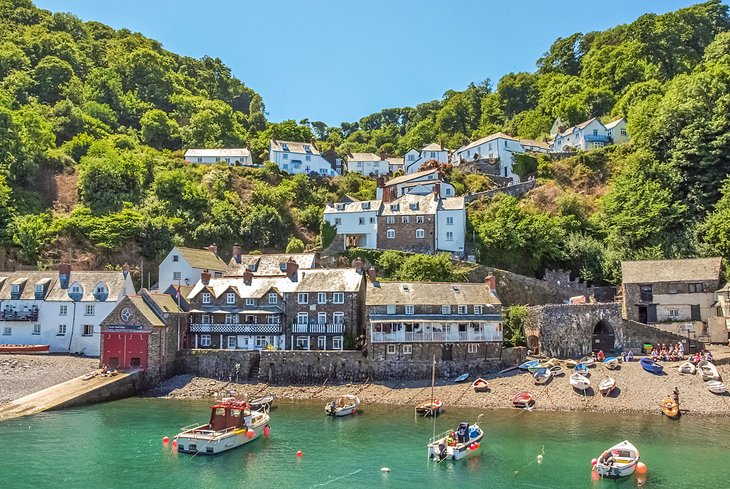
The beauty in this town is beyond measure. Cobbled, winding streets are lined with white cottages adorned with flowers. They literally ooze charm. The village is set into a 400-foot cliff in North Devon, the bottom of which ends at an ancient port. Built in the 14th century, the harbor is still used today.
The best part? Tourists don't have to dodge cars while exploring this heart-warming town, instead, they'll have to make way for donkeys and sleds—no vehicles are allowed.
Staying the night in this quiet, tranquil haven is a must for those looking to unwind. Plus, if you stay in the town, your small entry fee is generally waved. The fee covers parking, a short film about the town's history, two museums (Kingsley museum and Fisherman's Cottage), and access to the Clovelly Court Gardens.
Tip: The streets require a steep climb, which can be tough for some, but the view from the top is worth the somewhat cumbersome trek.
6. St. Ives, Cornwall
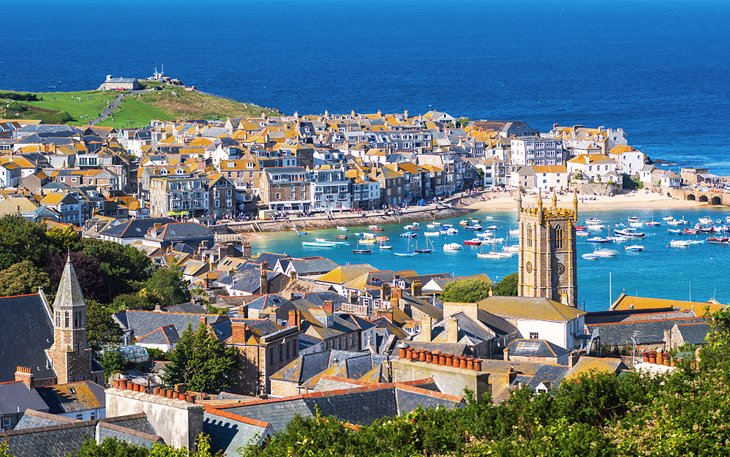
This gorgeous coastal town was once a fishing village. Over the years, however, it has become famed as a popular seaside resort. With its impeccable harbor and clean, soft, sandy beaches, St. Ives has received many accolades—"Best Seaside Town," "Best Family Holiday Destination," and one of the "Top 10 European beaches." Narrow, winding cobbled streets increase the charm factor, as do the fishermen's cottages and eclectic shops.
A perfect place for water-lovers and sun-worshippers, this Cornwall hot spot boasts sheltered coves for easy swimming. Grab a surfboard and ride the waves at Porthmeor beach, and rent a windsurfer or try your hand (or feet) at waterskiing.
Not a swimmer? Head out for a walk along the coast. Make time to visit the Tate St. Ives, an impressive art gallery with views of the Atlantic Ocean.
Tip: St. Ives is a popular vacation spot for the Brits, so be sure to book a hotel well in advance.
7. Warwick, Warwickshire
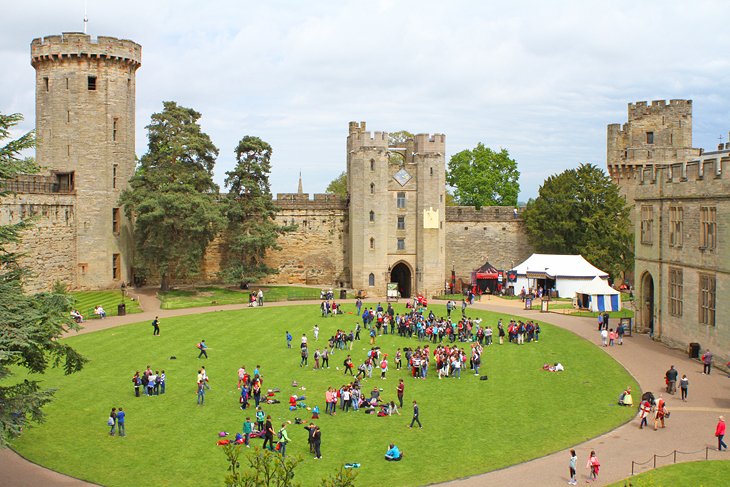
History abounds in this pretty town near the River Avon. Start with a tour of Charlecote Park, the stately Victorian home of the Lucy family. In addition to wandering the expansive grounds, set aside time to explore rooms that are open to the public—the library is a favorite.
Next, you'll want to schedule time for Warwick Castle—an example of what would happen if Disney and the Knights of the Roundtable had a baby. The castle has the impeccable charm of all English castles, with the bonus of being very well preserved. Families will love its ties to the Horrible Histories franchise, which allows kids to meet historic characters and interact with exhibits about everything you didn't know you wanted to learn (including poop).
Lord Leycester Hospital is another don't-miss site. A living museum (the name is derived from "hospitality," not "hospital"), this beautiful building is home to ex-service personnel/brethren who act as guides. It's less costly than Warwick Castle and boasts a tearoom with tasty treats.
Fun fact: Warwick Castle offers glamping on its grounds, with special early castle access for its guests and "knight school" in the evening. You'll sleep in a cozy bed within a large canvas tent and feast in a medieval banqueting hall.
8. Lyndhurst, Hampshire
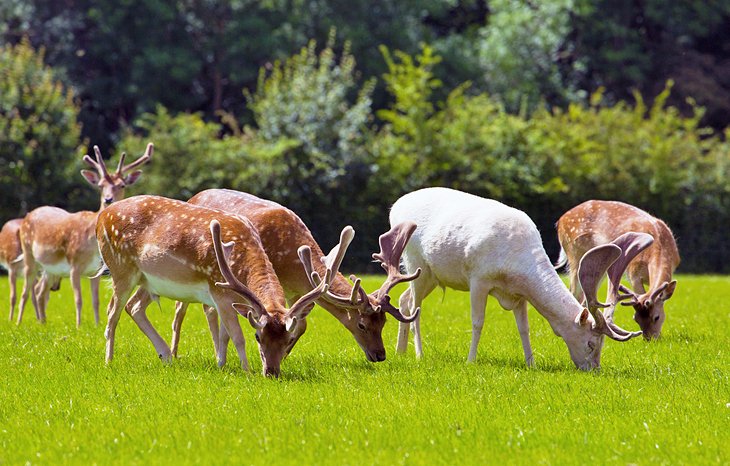
Nestled in the heart of England's New Forest, Lyndhurst is truly a hidden gem. It was established as a royal hunting ground by William the Conqueror in 1079. Today, it's a good base for those who'd like to spend the night in The New Forest without having to do so in a tent.
Whether you're a fan of biking, running, or walking, Lyndhurst offers access to numerous trails through the forest. Look out for the wild animal—cows, sheep, and horses roam free in this region.
In town, you'll find numerous small restaurants and quirky shops. Tasty Pastries offers fresh baked treats and Cornish pastries, while the charming Peggy May's café tenders a traditional English experience. The Forest Cream Tea, complete with two homemade scones, clotted cream, and a pot of tea, tops the list.
Don't miss St. Michael and All Angels, Lyndhurst's Parish Church. The stained-glass windows are lovely, but most tourists visit the churchyard in search of a grave. Alice Hargreaves, best known as the inspiration for Lewis Carroll's Alice in Wonderland, is buried here.
9. Henley-on-Thames, Oxfordshire
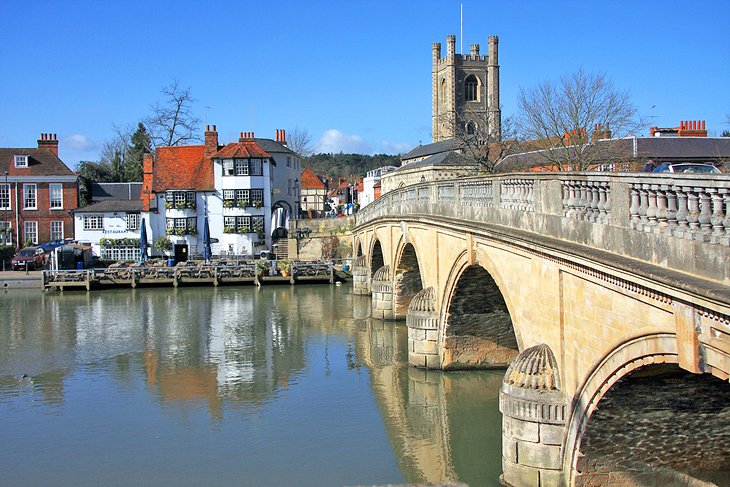
Home to the famous Henley Royal Regatta (a boat race in early July that brings in thousands of visitors), this beautiful spot was established as a market town in the 12th century. Walking the Thames Path National Trail is a must. It runs from Marsh Lock to Hambleden Lock.
Not a fan of walking? Rent a canoe instead and get out on Henley's main attraction—the water. Henley's River & Rowing Museum has been voted one of the world's 50 best museums (by The Times). It focuses on the river and rowing as an international sport.
A visit to Grey's Court is always enjoyable. Although small, this National Trust house is worth a look-see, especially in the spring, when the garden's bluebells and wisteria are in bloom.
10. Bourton-on-the-Water, Gloucestershire
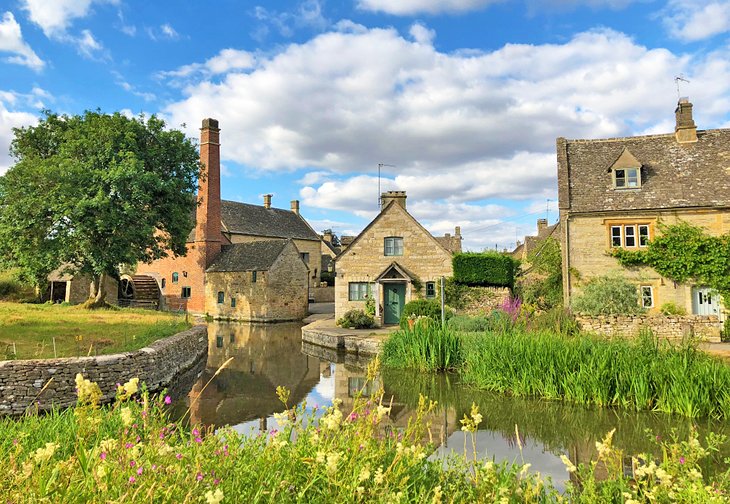
No trip to the Cotswolds is complete without a trip to Bourton-on-the-Water. Peppered with low, arched stone bridges that cross the River Windrush, it has been dubbed the "Venice of the Cotswolds." The high street is packed with quirky shops selling everything from antiques to tea cups to sportswear. It's also bursting with restaurants—Green & Pleasant has delectable sandwiches and lemon pie, plus gluten-free options.
The Cotswold Motoring Museum is a must for car lovers. Clever, simple, and funny descriptions make learning about classic automobiles a delight. It's much bigger than it seems from the outside, so plan for at least an hour (or two) here.
The Dragonfly Maze is a fun way to spend an afternoon. Solve the clues (and get through the maze) to find the dragonfly—don't worry, the lovely lady in charge will help when you get stuck.
Bird lovers, prepare yourselves for Birdland. Over 500 of our winged friends call this nine-acre gardens and woodlands home. Spend time getting to know the flamingoes over a "cuppa" at the Flamingo Point Café.
11. Avebury, Wiltshire
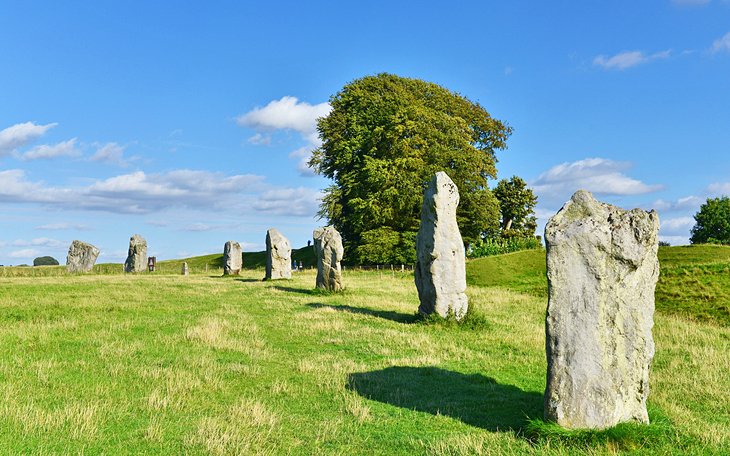
Many argue that Avebury's henge and stone circles are more enjoyable to visit than the over-crowded (and roped-off) Stonehenge. Built sometime between 2850 and 2200 BC, this henge encircles part of Avebury village. This National Trust site also contains the largest stone circle in Britain.
Wear appropriate footwear to get up close and personal with the impressive stones (it's often muddy and slippery). There's no real need to stay overnight, as the village is tiny and sits an hour from the larger Salisbury, best known for Salisbury Cathedral, which houses the Magna Carta.
While driving, watch out for the white, chalk horse on White Horse Hill near Uffington. Nearby Silbury Hill is also worth a stop if you're traveling on the A4, but it can't be climbed.
12. Dedham, Essex
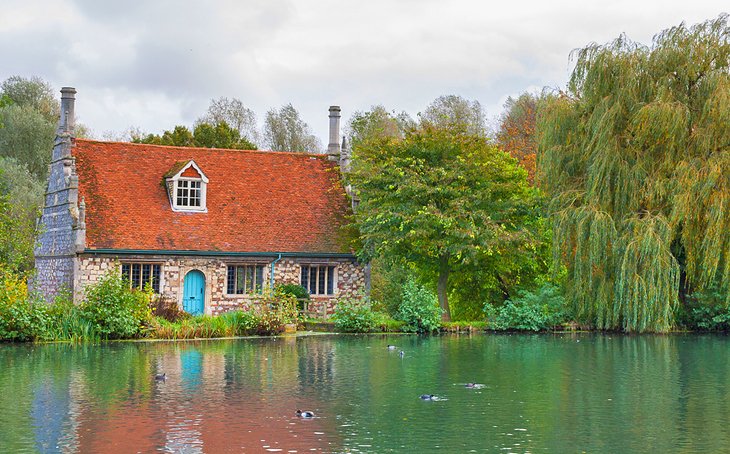
This sweet town inspired the work of Britain's greatest landscape artist, John Constable. Once you visit, you'll understand why. Spotted with Georgian-fronted town homes, Dedham is idyllic. The surrounding countryside transports visitors to a place of calm and tranquility.
Perhaps the most well-loved aspect of this area are the water meadows, which beckon to artists, photographers, walkers, and others who love to spend time outdoors.
Castle House is home to the Munnings Art Museum, featuring work from another local artist—horse painter Sir Alfred Munnings. He, too, appreciated the area's beauty.
Take a boat trip along the River Stour to nearby Flatford Mill. While here, spend time at the John Contstable Exhibition in Bridge Cottage and walk in his footsteps through the local countryside.
13. Alfriston, East Sussex
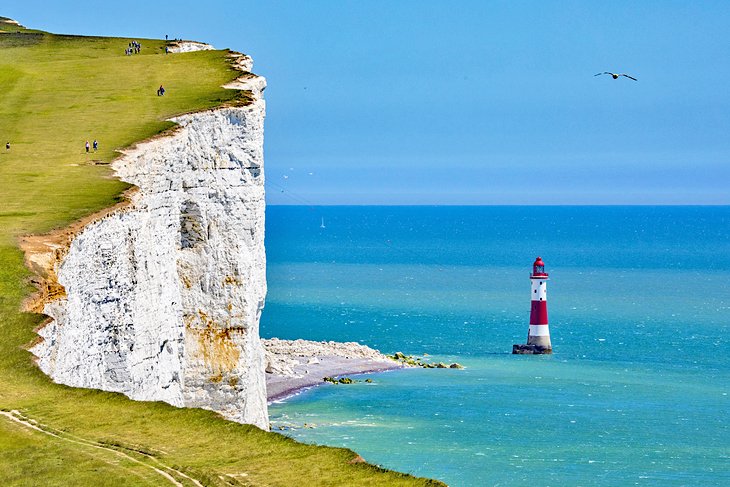
Tourists flock to the South Downs National Park year-round. With over 1,600 kilometers of rolling hills, ancient woods, and picturesque landscapes, it's easy to see why. The white cliffs of the Seven Sisters are another of the park's main draws.
With so much land to cover, tourists often search for a place to find respite. Nearby Alfriston is the perfect spot. Bursting with quaint boutiques, cafés, and galleries, there's something for everyone to love in this small town.
The Cathedral of the South Downs (a.k.a. St. Andrews Church) is not to be missed. Built in 1360, it sits on the edge of the village green (Tye) right by the river Cuckmere. Built in the shape of a cross, it's also home to the Alfriston Clergy House, a Wealden hall-house with a thatched roof and timber frame. It's only open between March and December, so be sure to time your visit.
Tip: Don't miss the old (disarmed) Alfriston mine. It washed up at the River Cuckmere in 1943 and was placed on the green in hopes of inspiring visitors to "spare a coin in grateful thanks that Alfriston is not just another ruin, which would have been the case had the mine exploded."
14. Whitstable, Kent
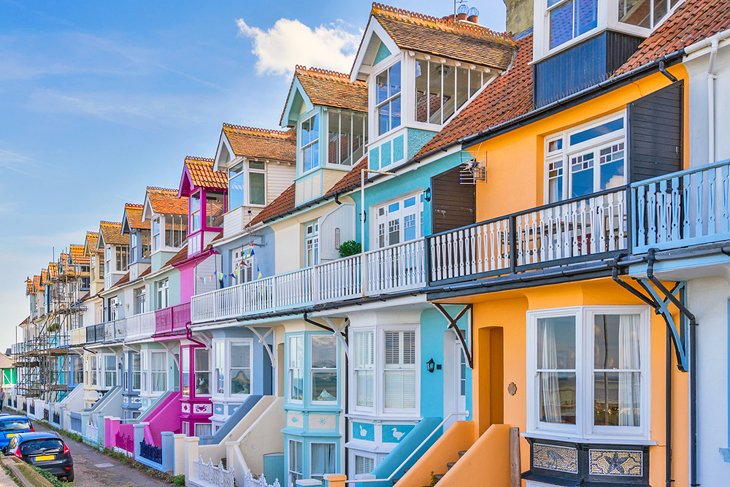
This small seaside town is a perfect spot to escape the hustle and bustle of city life. You won't need a whole day here, so book a hotel in nearby Canterbury, which is a mere five miles away. Whitstable is best known for its colorful houses and fishermen's shacks. Walking along the shore will bring you face to bow with a bevy of boats awaiting their next catch.
You'll love wandering through the lively Whitstable Harbour. On a warm, sunny day, it's packed with bathing suit-clad tourists enjoying 99s (English soft-serve vanilla ice-cream). Colorful beach sheds line the harbor, selling everything from baby clothes to jams to inflatable rafts. Seafood is perhaps the best reason to visit this waterfront gem. After all, it's literally being served fresh off the boat.
(thanks to: www.planetware.com)
Comments
Post a Comment